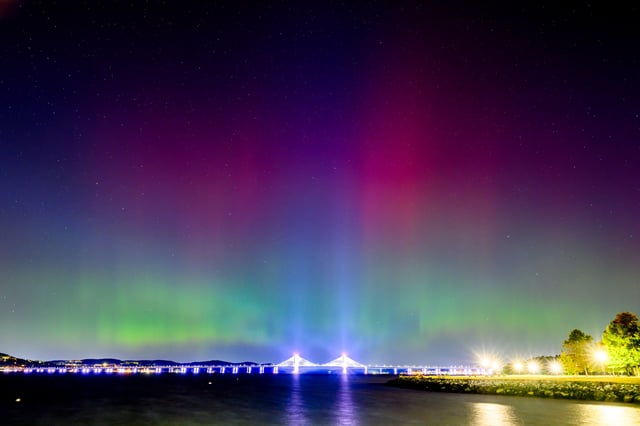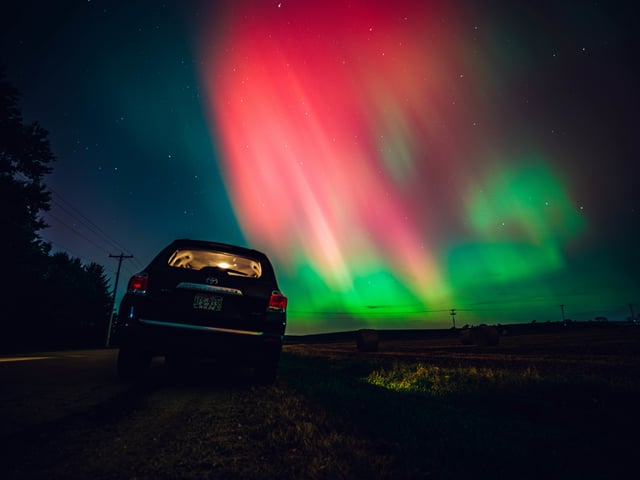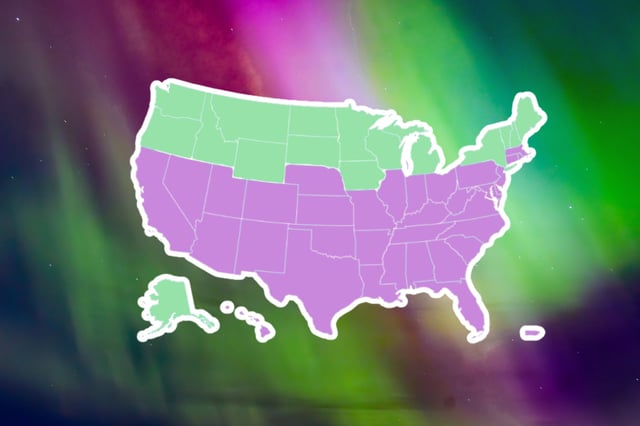Overview
- NOAA’s Space Weather Prediction Center expects isolated G1 conditions, with Kp near 5 possible, after a quieter Tuesday near Kp 3 and a potential boost from a glancing CME that left the sun on Aug. 17.
- Aurora viewline maps place visibility across parts of Alaska and the northern continental U.S., including Washington, Idaho, Montana, the Dakotas, Minnesota, Wisconsin, Michigan, Iowa, New York, Vermont, New Hampshire and Maine, with Oregon, Wyoming and northern Illinois near the edge at times.
- Best viewing is typically between about 10 p.m. and 2–4 a.m. local time from dark locations with a clear, north-facing horizon; smartphone night modes and long exposures can improve detection.
- Cloud cover could hinder views across portions of the Midwest on Tuesday night, and forecasters describe New England odds as low aside from far northern Maine if G1 levels are reached.
- Outlook details can shift quickly, so forecasters urge checking NOAA’s 30-minute aurora forecasts and Aurora Dashboard for real-time updates on positioning and intensity.



